History of Dried Fig
The history of dried figs traces back thousands of years, with origins in the Mediterranean region and Western Asia. The fig, scientifically known as Ficus Moraceae, belongs to the Moraceae family and is a flowering plant species. Archaeological findings suggest that figs were potentially the earliest cultivated crop by humans, dating back more than 11,400 years. It is believed that figs were among the first fruits to be cultivated by humans, existing as a cultivated fruit for around 1,000 years in the Middle East before the cultivation of wheat, barley, and legumes.
Figs have been cultivated and consumed since ancient times, serving as an essential part of various cultures and culinary traditions. Ancient civilizations, such as those of ancient Greece and Mesopotamia, revered figs for their nutritional value, sweetness, and preserving capabilities. Figs were valued for their long shelf life and were often dried to ensure their availability beyond the harvest season. This made figs an important source of nourishment and sustenance, particularly during periods of scarcity.
The fig holds great significance, being referenced in various religious texts such as the Bible, the Quran, and the Torah, as well as in cultural and historical narratives like "Romulus and Remus." Additionally, according to historical accounts, Adam and Eve were said to have used fig leaves to cover themselves in the absence of clothing during the early years of the earth. Though the fig likely originated in ancient Persia, today it is commonly cultivated in regions spanning from western Asia and Asia Minor to the Mediterranean. Figs are esteemed among dried fruits and can be enjoyed in their fresh form or in various preserved states, including dried and canned versions. This soft, sweet, and pulpy fruit not only offers a delicious taste but also contributes to overall health and well-being.
Figs have been cultivated and consumed since ancient times, serving as an essential part of various cultures and culinary traditions. Ancient civilizations, such as those of ancient Greece and Mesopotamia, revered figs for their nutritional value, sweetness, and preserving capabilities. Figs were valued for their long shelf life and were often dried to ensure their availability beyond the harvest season. This made figs an important source of nourishment and sustenance, particularly during periods of scarcity.
The fig holds great significance, being referenced in various religious texts such as the Bible, the Quran, and the Torah, as well as in cultural and historical narratives like "Romulus and Remus." Additionally, according to historical accounts, Adam and Eve were said to have used fig leaves to cover themselves in the absence of clothing during the early years of the earth. Though the fig likely originated in ancient Persia, today it is commonly cultivated in regions spanning from western Asia and Asia Minor to the Mediterranean. Figs are esteemed among dried fruits and can be enjoyed in their fresh form or in various preserved states, including dried and canned versions. This soft, sweet, and pulpy fruit not only offers a delicious taste but also contributes to overall health and well-being.
Nurtured in the time-honored soils of Persia, Persian dried figs represent a delightful fruit that embodies tradition and genuineness. Renowned for their inherent sweetness and smooth texture, these figs are grown with a profound reverence for the heritage they symbolize. Each fig undergoes a careful process of sun-ripening and handpicking, preserving the rich flavors of the land. More than just a fruit, Persian figs encapsulate a taste of history and an immersive journey into the essence of Persia. Whether consumed fresh or in their dried form, they offer a delightful culinary experience that evokes the sweetness of centuries past.
Several Types of Persian Dried Figs
The primary attribute of Persian figs is their dry, somewhat firm, and wrinkled nature. these figs exhibit variations in both size and color. We categorize figs into two primary groups: those with an open mouth (101) and those with a closed mouth. Each type is further subdivided into three distinct categories as outlined below.
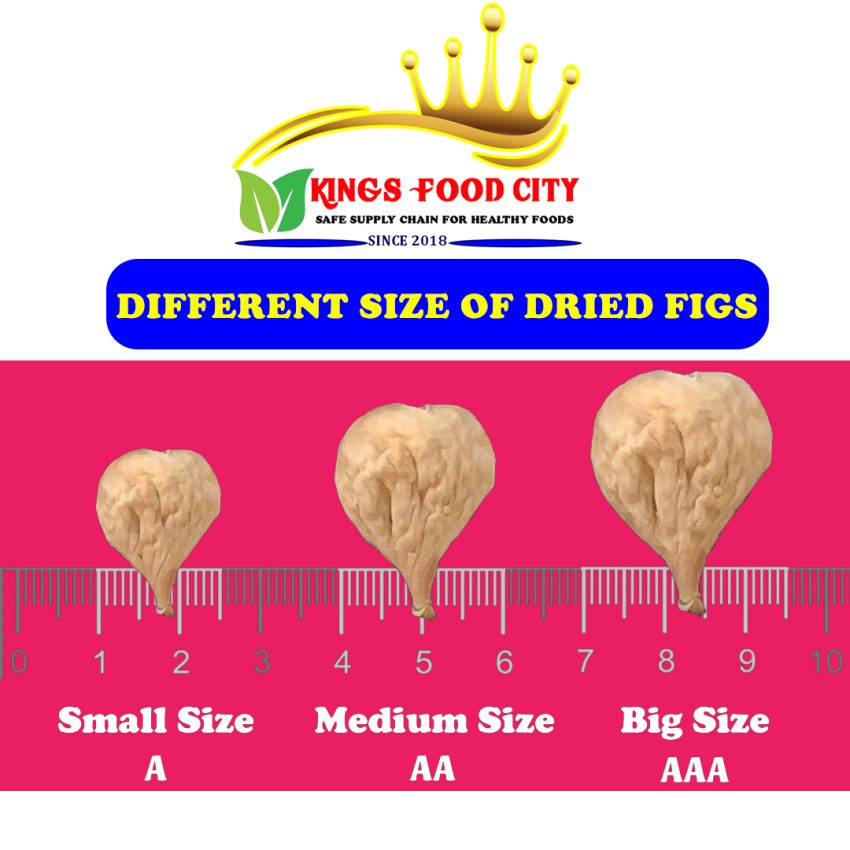
Because there are no set standards outlining the specific characteristics of Persian dried figs, their classification doesn't adhere to any particular international or national standard system. Instead, it largely depends on traditional market knowledge. When grading Persian dried figs, three factors are taken into account:
Size: They are sorted into three categories according to their diameter. With all other factors held constant (such as color and width), larger figs command higher prices.
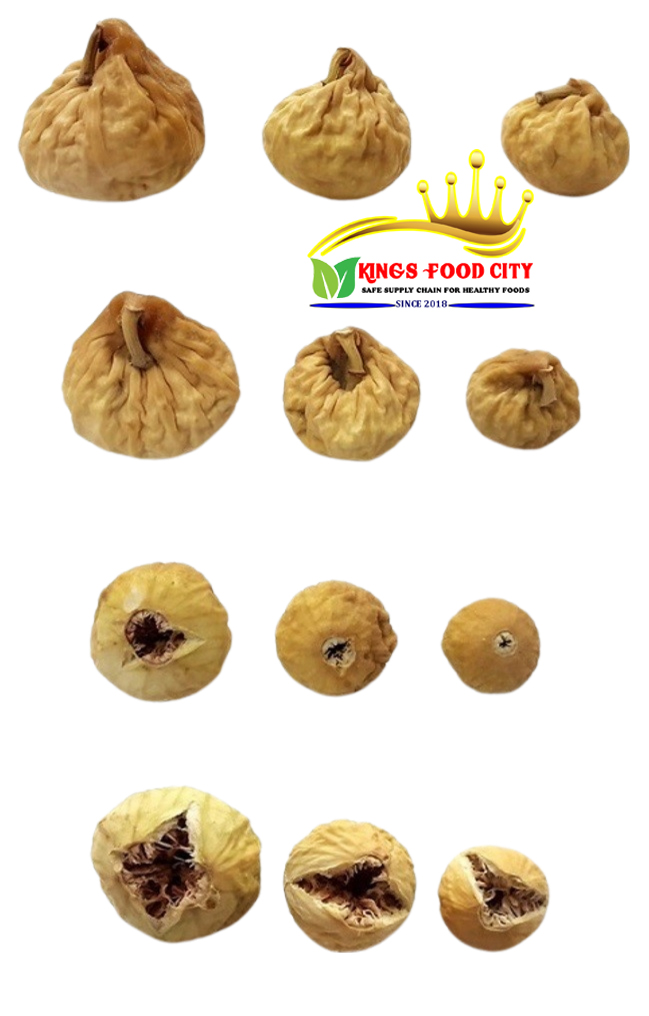
Color: we categorize them based on their color, ranging from vibrant yellow (referred to locally as white) to light yellow and brown/grey. When other factors like size and width remain the same, figs with a brighter color command higher prices.
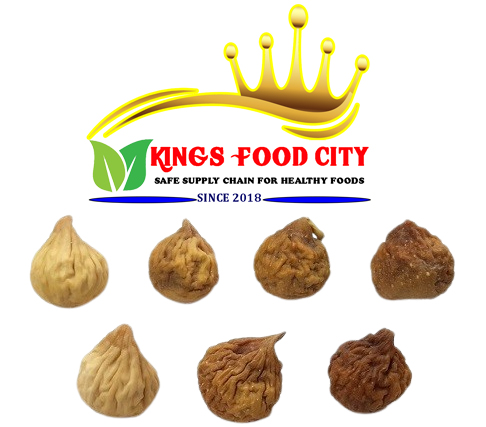
Mouth Width: we classify them into two primary types known as open-mouth and closed-mouth based on the width of their mouths.
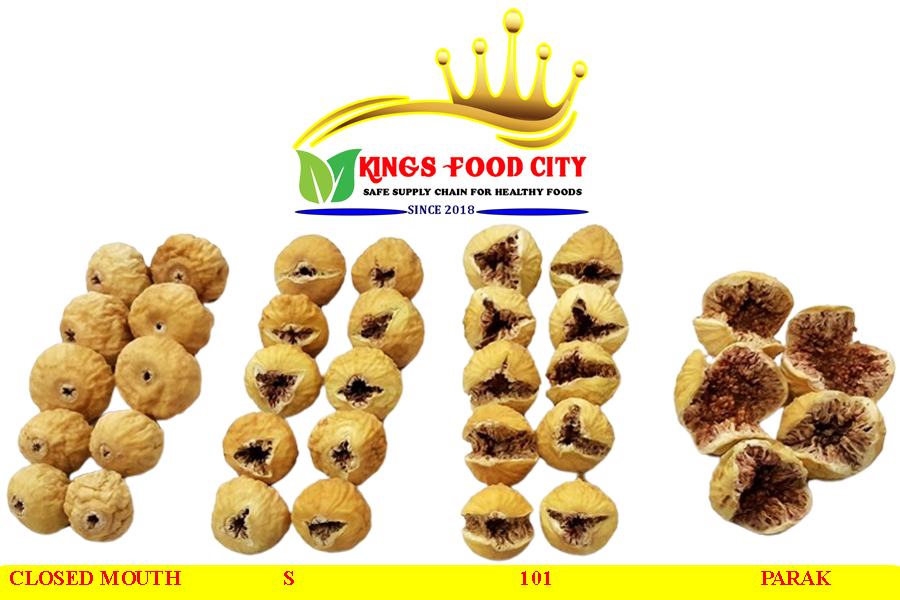
The open-mouth figs are categorized into three groups, namely "S", "101", and "Parak", based on their width. The "S" grade represents figs with a Slightly open mouth, while the "101" grade signifies figs with a fully open mouth, which is referred to as being as rare as one in a hundred by the locals. The "Parak" grade pertains to fully bloomed dried figs.
When the size and color of the figs are held constant, the cost of the figs increases as the mouth width becomes wider. For processors of dried figs, it is possible to customize orders by adjusting the proportions of open-mouth/closed-mouth, dark/light, and small/large figs. This allows for offering a product that meets the customers' financial requirements.
When the size and color of the figs are held constant, the cost of the figs increases as the mouth width becomes wider. For processors of dried figs, it is possible to customize orders by adjusting the proportions of open-mouth/closed-mouth, dark/light, and small/large figs. This allows for offering a product that meets the customers' financial requirements.
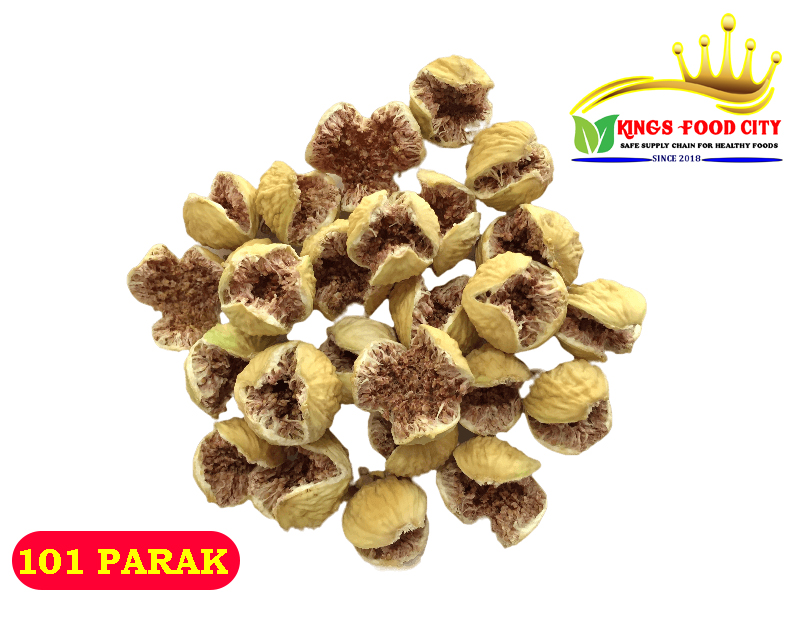
| Grade 101 Parak more than 90% of this grade is opened mouth |
|---|
| Size: about 23 mm and up |
| Color: Yellowish white |
| Humidity: 10-12 % |
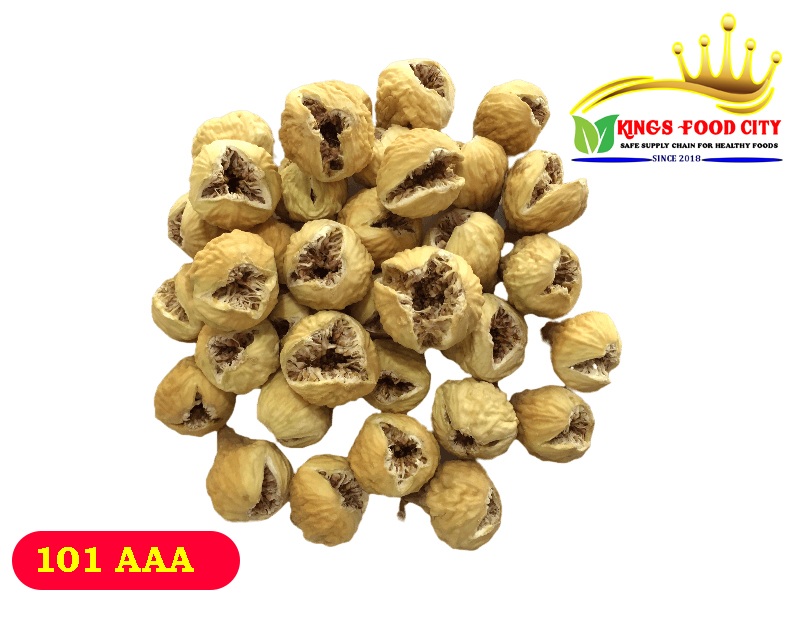
| Grade 101 AAA more than 90% of this grade is opened mouth |
|---|
| Size: about 23 mm and up |
| Color: Yellowish white |
| Humidity: 10-12 % |
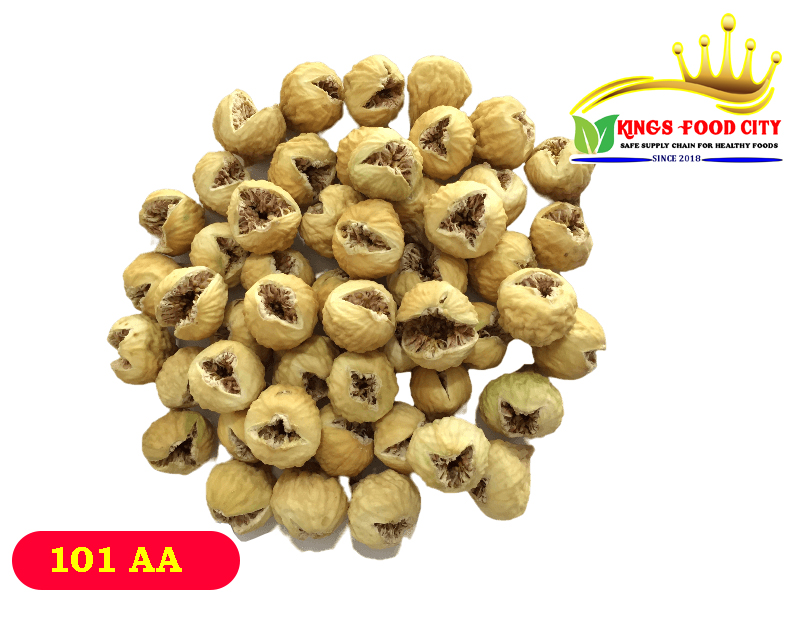
| Grade 101 AA more than 90% of this grade is opened mouth |
|---|
| Size: about 20 to 23 mm |
| Color: Yellowish white |
| Humidity: 10-12 % |
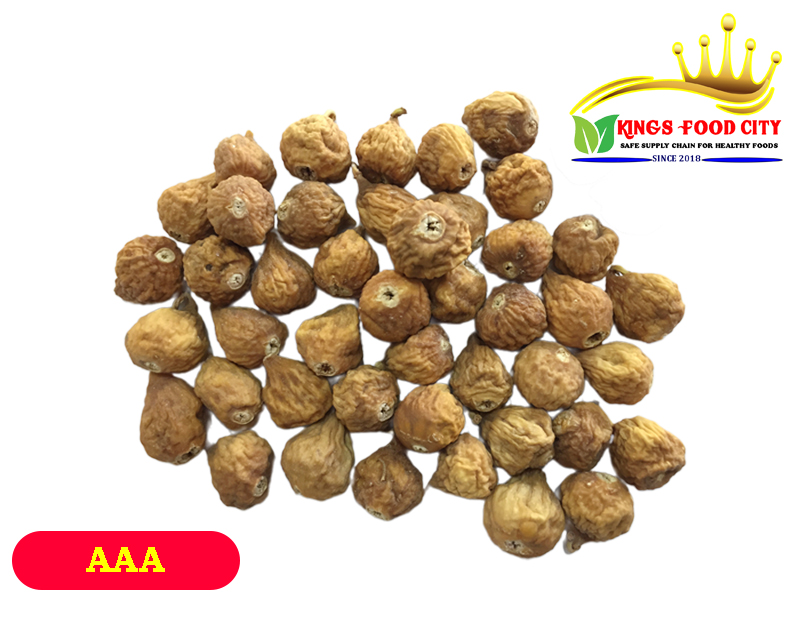
| Grade AAA: 100% of this grade is closed mouth |
|---|
| Size: about 23 mm and up |
| Color: light brown and only 4 to 5% dark brown |
| Humidity: 10-12 % |
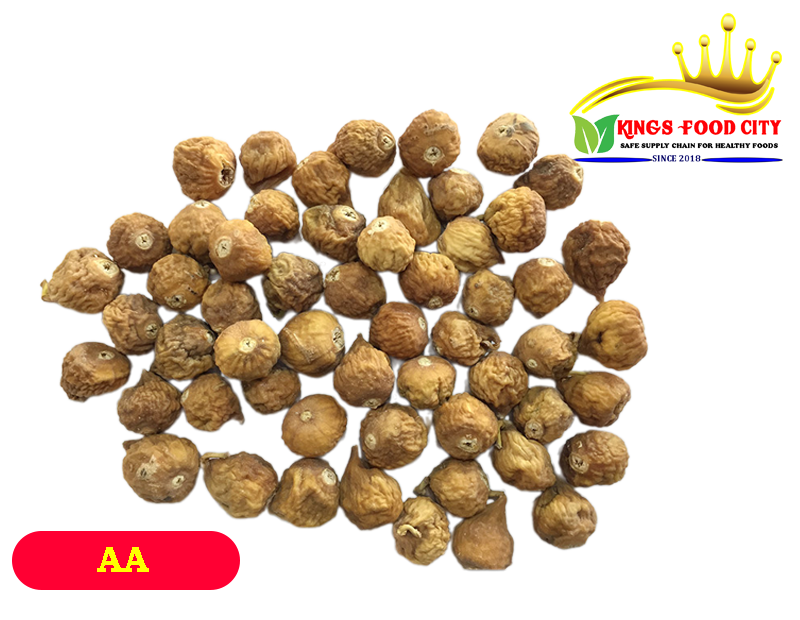
| Grade AA: 100% of this grade is closed mouth |
|---|
| Size: about 20 to 23 mm and up |
| Color: light brown and only 4 to 5% dark brown |
| Humidity: 10-12 % |
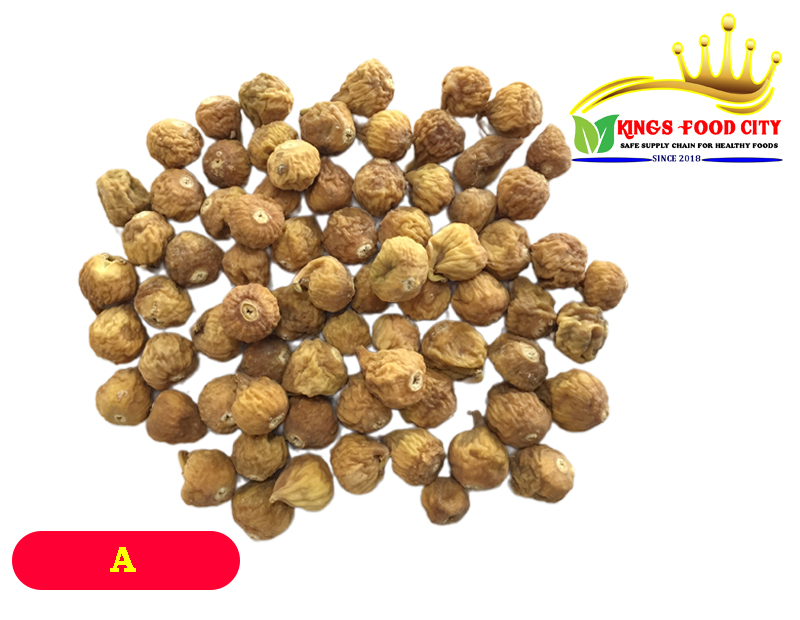
| Grade A more than 90% of this grade is closed mouth |
|---|
| Size: about 17 to 20 mm |
| Color: light brown and about 15 to 16% dark brown |
| Humidity: 10-12 % |
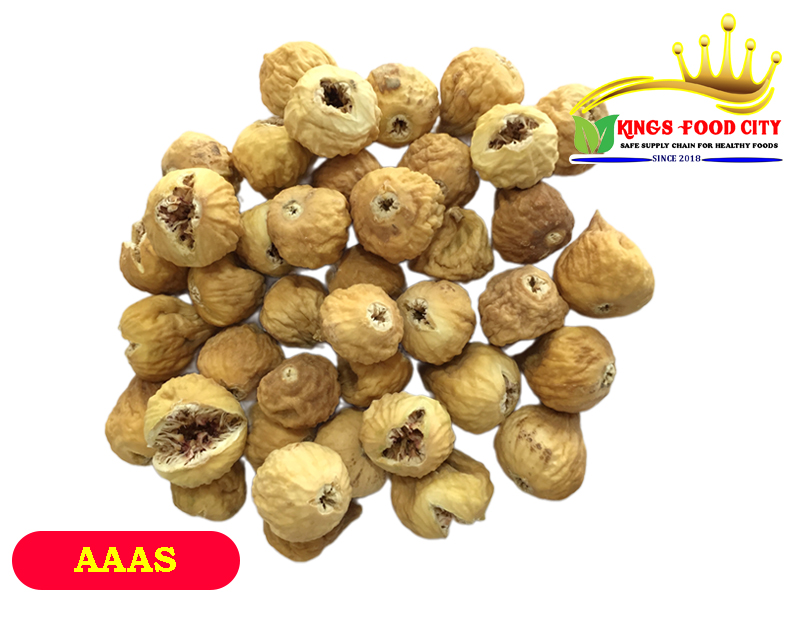
| Grade AAAS: 20% of this grade is opened mouth |
|---|
| Size: about 23 mm and up |
| Color: yellowish white and only 4 to 5% brown |
| Humidity: 10-12 % |
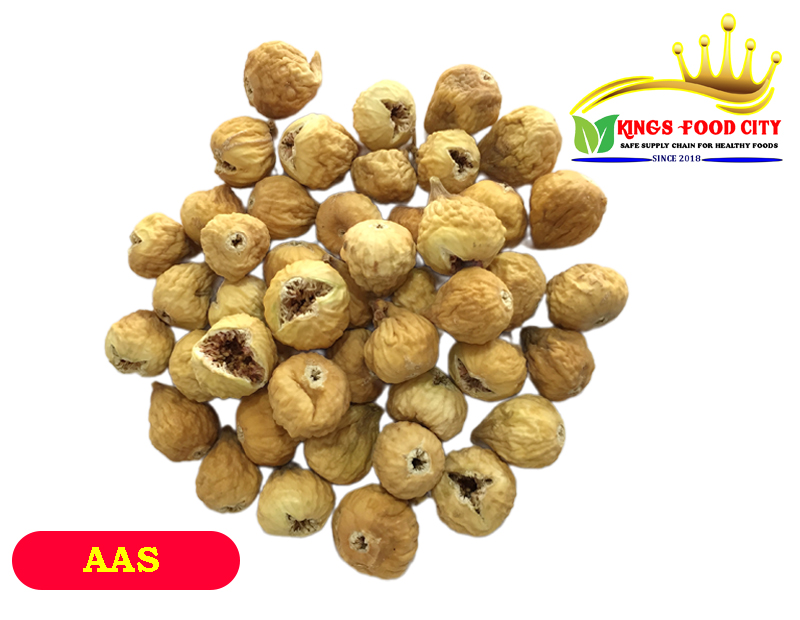
| Grade AAS: 20% of this grade is opened mouth |
|---|
| Size: about 22 mm and up |
| Color: yellowish white and only 4 to 5% brown |
| Humidity: 10-12 % |
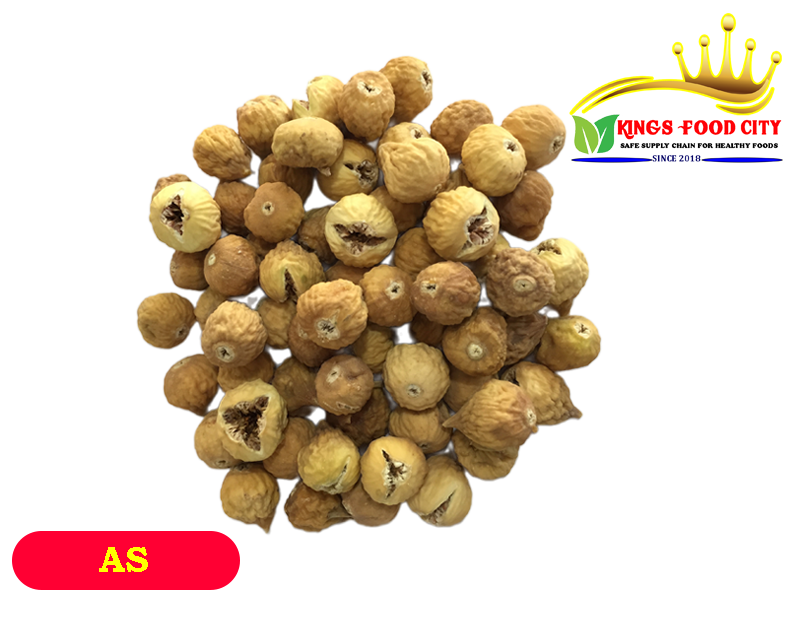
| Grade AS: 20% of this grade is opened mouth |
|---|
| Size: about 18 to 22 mm and up |
| Color: yellowish white and only 15 to 16% brown |
| Humidity: 10-12 % |
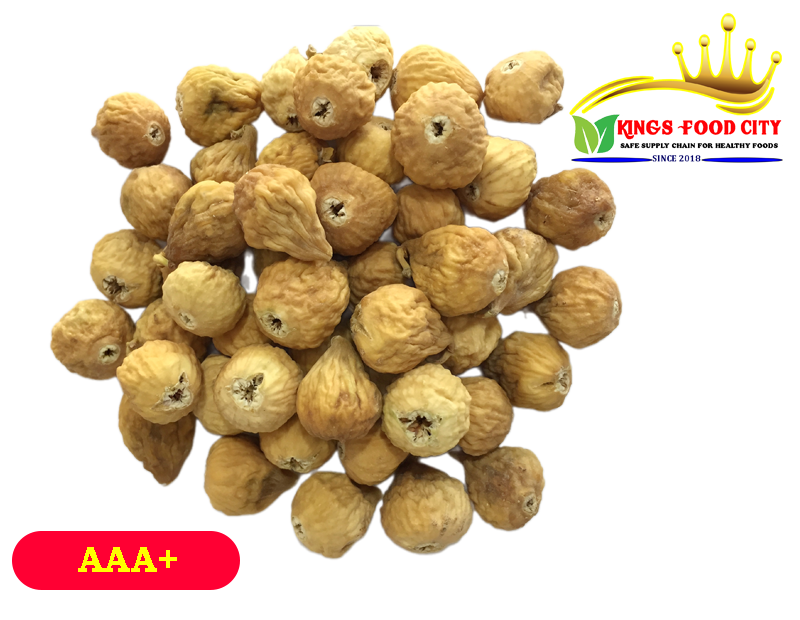
| Grade AAA+: 100% of this grade is closed mouth |
|---|
| Size: about 23 mm and up |
| Color: yellowish white and only 4 to 5% brown |
| Humidity: 10-12 % |
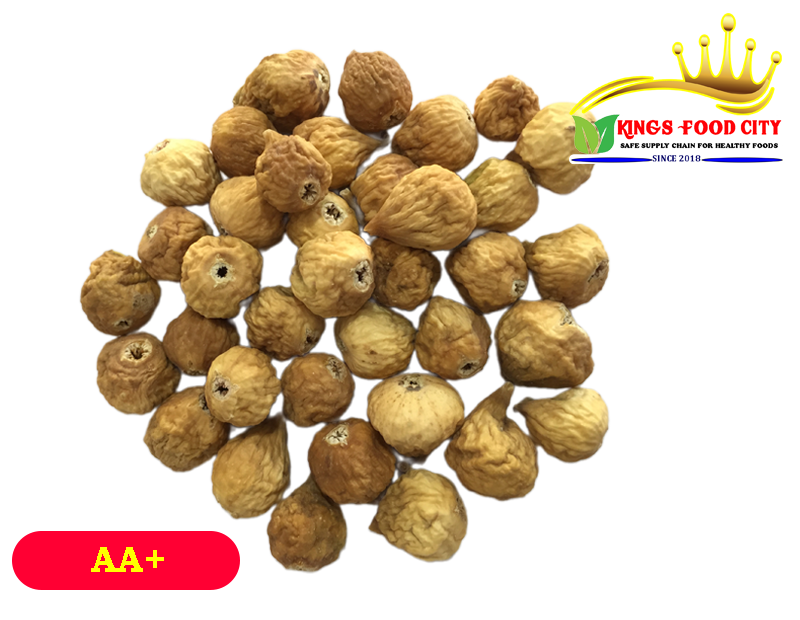
| Grade AA+: 100% of this grade is closed mouth |
|---|
| Size: about 22 mm and up |
| Color: yellowish white and only 4 to 5% brown |
| Humidity: 10-12 % |
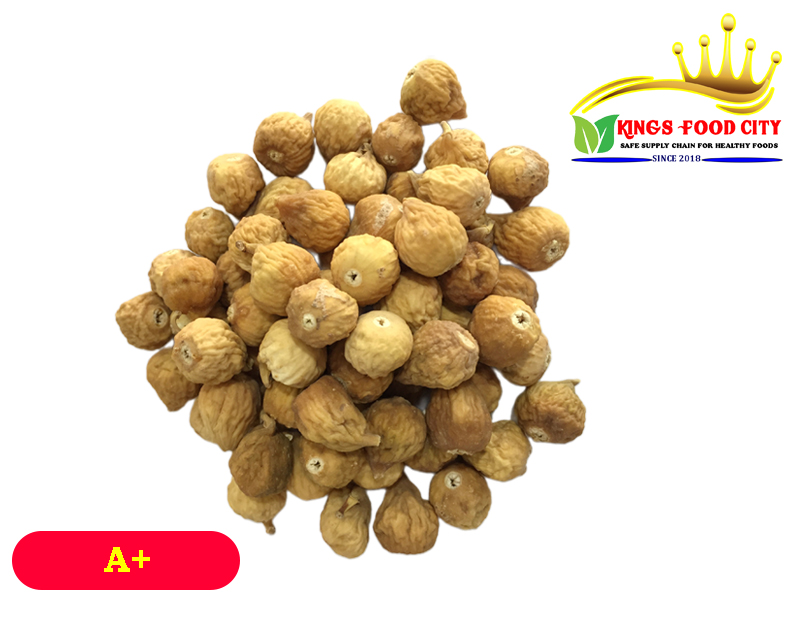
| Grade A+: more than 90% of this grade is closed mouth |
|---|
| Size: about 18 to 22 mm and up |
| Color: yellowish white and only 4 to 5% brown |
| Humidity: 10-12 % |
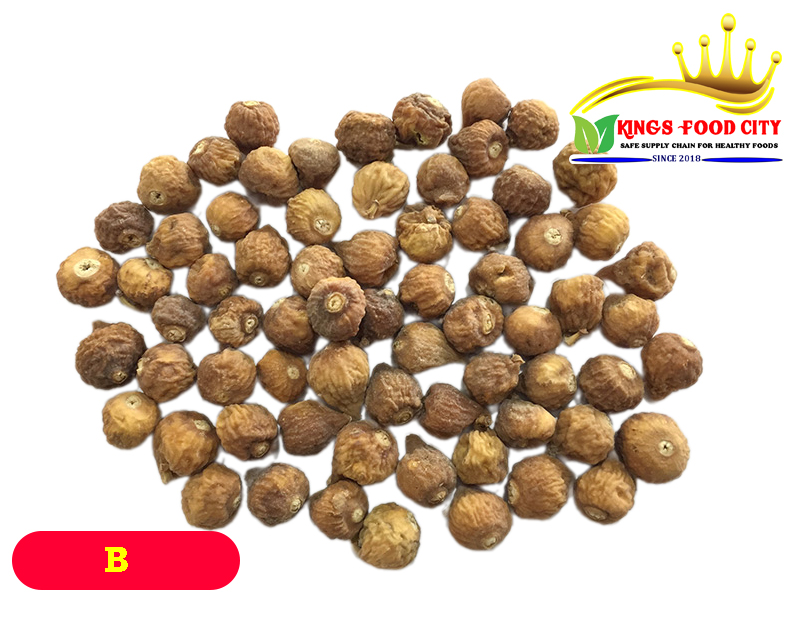
| Grade B: 100% of this grade is closed mouth |
| Size: about 14 to 18 mm and up |
| Color: Grayish brown |
| Humidity: 10-12 % |
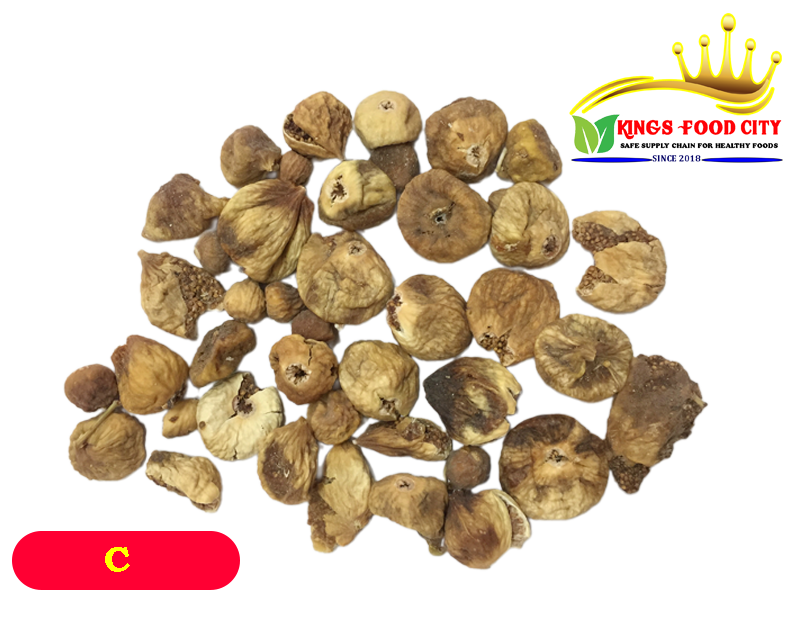
Grade C dried figs are typically damaged or deformed during collection, transportation, and storage. As a result, they are not suitable for the dried fruit market and are primarily utilized in processed industrial applications like dough, liquid sugar, and jam production. Additionally, they find usage in the food industry for items such as biscuits, cookies, and chocolate, as well as in the manufacturing of tobacco products.
Pressed Dried Fig
Wet compressed figs refer to dried figs that undergo a process of being soaked and gently pressed in specialized molds, resulting in a sweet and refreshing flavor. These moist figs are available in packaging options of 200g and 400g.
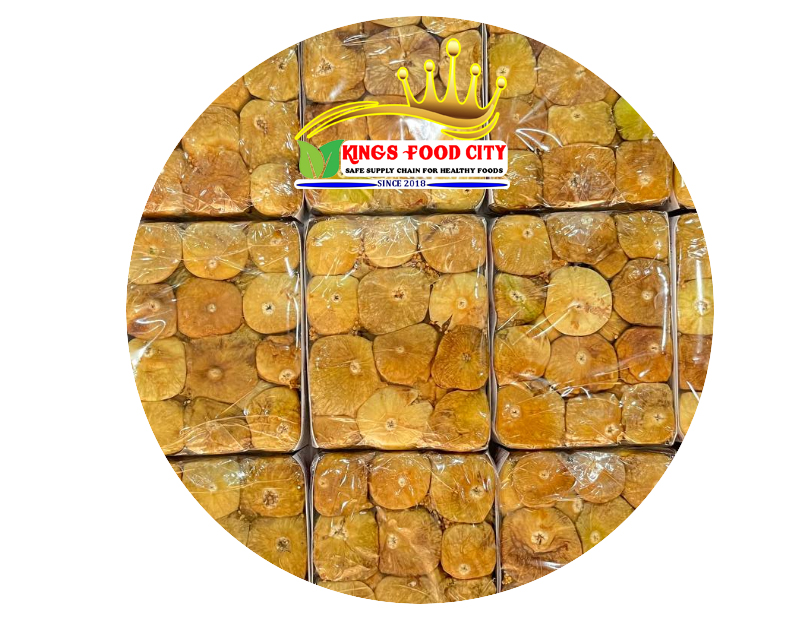
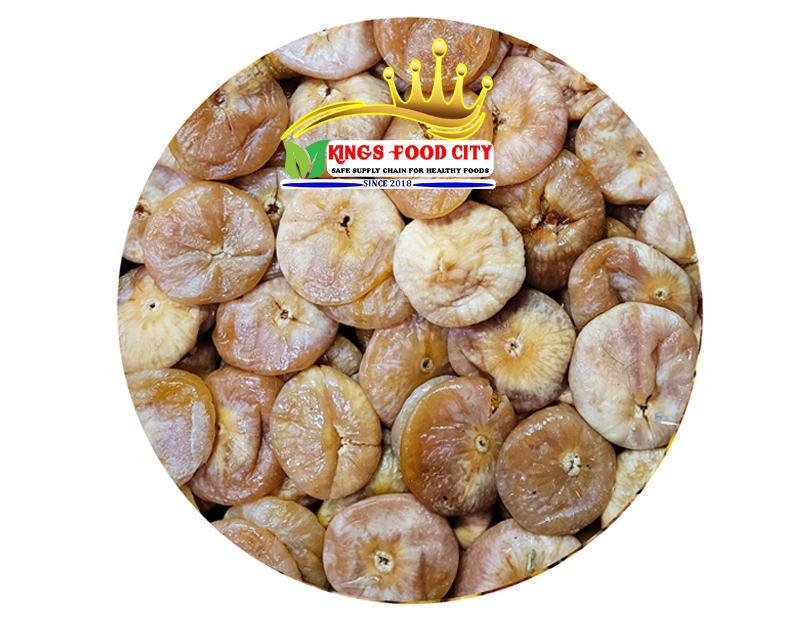
Health Benefit of Dried Fig
Figs provide a natural source of sugar, soluble fiber, and various minerals. Iron is particularly important for growing women, and figs, whether fresh or dried, are a great source of this essential mineral. Figs also contain a range of nutrients, including potassium, calcium, magnesium, copper, and antioxidants like vitamin A and vitamin L, which promote overall health and well-being.
1. Rich source of nutrients: Dried figs are a concentrated source of essential vitamins and minerals, including potassium, calcium, magnesium, iron, and vitamins A, E, and K. These nutrients are important for maintaining overall health and supporting various bodily functions.
2. High fiber content: Dried figs are packed with dietary fiber, which aids digestion and helps prevent constipation. Fiber also promotes feelings of fullness, which can help with weight management and prevent overeating.
3. Antioxidant properties: Dried figs are rich in antioxidants like phenols and flavonoids, which help protect the body against oxidative stress and reduce inflammation. Antioxidants are important for overall health and have been linked to a reduced risk of chronic diseases, including heart disease and certain cancers.
4. Natural sweetness: we can use figs as a natural sweetener, making them a healthier alternative to processed sugars. They can be enjoyed as a guilt-free snack or added to various dishes like yogurt, smoothies, or baked goods for natural sweetness without the need for extra sugar.
5. Heart health: The high potassium and low sodium content in dried figs make them beneficial for heart health. Potassium helps lower blood pressure, while sodium can contribute to high blood pressure, a risk factor for heart disease.
6. Bone health: Dried figs are a good source of calcium, which is important for maintaining strong bones and preventing conditions like osteoporosis. They also contain vitamin K, which plays a crucial role in bone health and blood clotting.
7. Blood sugar control: Despite their natural sweetness, dried figs have a low glycemic index, meaning they have a minimal impact on blood sugar levels. This makes them a healthy snack option for individuals with diabetes or those looking to maintain stable blood sugar levels.
1. Rich source of nutrients: Dried figs are a concentrated source of essential vitamins and minerals, including potassium, calcium, magnesium, iron, and vitamins A, E, and K. These nutrients are important for maintaining overall health and supporting various bodily functions.
2. High fiber content: Dried figs are packed with dietary fiber, which aids digestion and helps prevent constipation. Fiber also promotes feelings of fullness, which can help with weight management and prevent overeating.
3. Antioxidant properties: Dried figs are rich in antioxidants like phenols and flavonoids, which help protect the body against oxidative stress and reduce inflammation. Antioxidants are important for overall health and have been linked to a reduced risk of chronic diseases, including heart disease and certain cancers.
4. Natural sweetness: we can use figs as a natural sweetener, making them a healthier alternative to processed sugars. They can be enjoyed as a guilt-free snack or added to various dishes like yogurt, smoothies, or baked goods for natural sweetness without the need for extra sugar.
5. Heart health: The high potassium and low sodium content in dried figs make them beneficial for heart health. Potassium helps lower blood pressure, while sodium can contribute to high blood pressure, a risk factor for heart disease.
6. Bone health: Dried figs are a good source of calcium, which is important for maintaining strong bones and preventing conditions like osteoporosis. They also contain vitamin K, which plays a crucial role in bone health and blood clotting.
7. Blood sugar control: Despite their natural sweetness, dried figs have a low glycemic index, meaning they have a minimal impact on blood sugar levels. This makes them a healthy snack option for individuals with diabetes or those looking to maintain stable blood sugar levels.
Culinary Uses of Dried Figs
Dried figs are a versatile and delicious ingredient that can be used in various culinary dishes. Here are some common culinary uses of dried figs:
1. Baking: they can be soaked in water or another liquid to rehydrate them, making them a great addition to baked goods like cakes, muffins, bread, and cookies. They add a natural sweetness, a chewy texture, and a rich flavor to the baked treats.
2. Salads: you can add dried figs to both green and fruit-based salads to provide a sweet and chewy contrast. When combined with other ingredients like goat cheese, nuts, and greens, dried figs can create a balanced and flavorful salad.
3. Cheese boards: these delicious figs make a great accompaniment on cheese boards. The sweetness of the figs complements the salty and creamy flavors of different cheeses. They can be served whole or sliced, adding a delightful texture and taste.
4. Stuffing: dried figs may be used as a stuffing for various meats like pork, chicken, or turkey. They add a sweet and savory element to the stuffing and infuse it with their rich flavor. This filling can elevate the taste of the dish and create an interesting contrast of textures.
5. Sauces and condiments: they may be cooked down with water, spices, and other ingredients to make a flavorful fig sauce or chutney. This can be served as a condiment alongside roasted meats, cheese platters, or even as an accompaniment to crusty bread.
6. Snacks: you can eat them on their own as a healthy and sweet snack. They are naturally high in fiber, which makes them a satisfying option for curbing hunger between meals. They can also be paired with nuts or seeds for added texture and nutritional value.
7. Toppings: chopped or sliced dried figs can be used as toppings for breakfast bowls like yogurt, oatmeal, or smoothie bowls. The natural sweetness of the figs adds a burst of flavor to the dish and makes it more visually appealing.
1. Baking: they can be soaked in water or another liquid to rehydrate them, making them a great addition to baked goods like cakes, muffins, bread, and cookies. They add a natural sweetness, a chewy texture, and a rich flavor to the baked treats.
2. Salads: you can add dried figs to both green and fruit-based salads to provide a sweet and chewy contrast. When combined with other ingredients like goat cheese, nuts, and greens, dried figs can create a balanced and flavorful salad.
3. Cheese boards: these delicious figs make a great accompaniment on cheese boards. The sweetness of the figs complements the salty and creamy flavors of different cheeses. They can be served whole or sliced, adding a delightful texture and taste.
4. Stuffing: dried figs may be used as a stuffing for various meats like pork, chicken, or turkey. They add a sweet and savory element to the stuffing and infuse it with their rich flavor. This filling can elevate the taste of the dish and create an interesting contrast of textures.
5. Sauces and condiments: they may be cooked down with water, spices, and other ingredients to make a flavorful fig sauce or chutney. This can be served as a condiment alongside roasted meats, cheese platters, or even as an accompaniment to crusty bread.
6. Snacks: you can eat them on their own as a healthy and sweet snack. They are naturally high in fiber, which makes them a satisfying option for curbing hunger between meals. They can also be paired with nuts or seeds for added texture and nutritional value.
7. Toppings: chopped or sliced dried figs can be used as toppings for breakfast bowls like yogurt, oatmeal, or smoothie bowls. The natural sweetness of the figs adds a burst of flavor to the dish and makes it more visually appealing.

